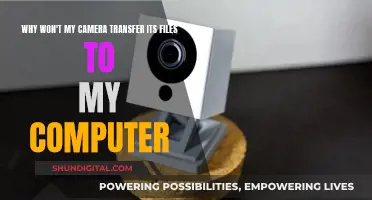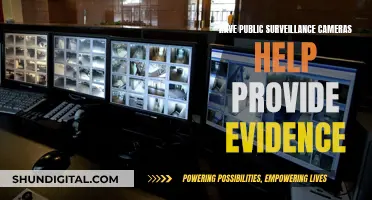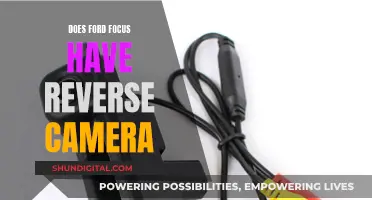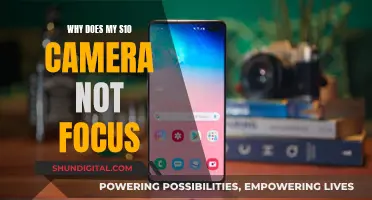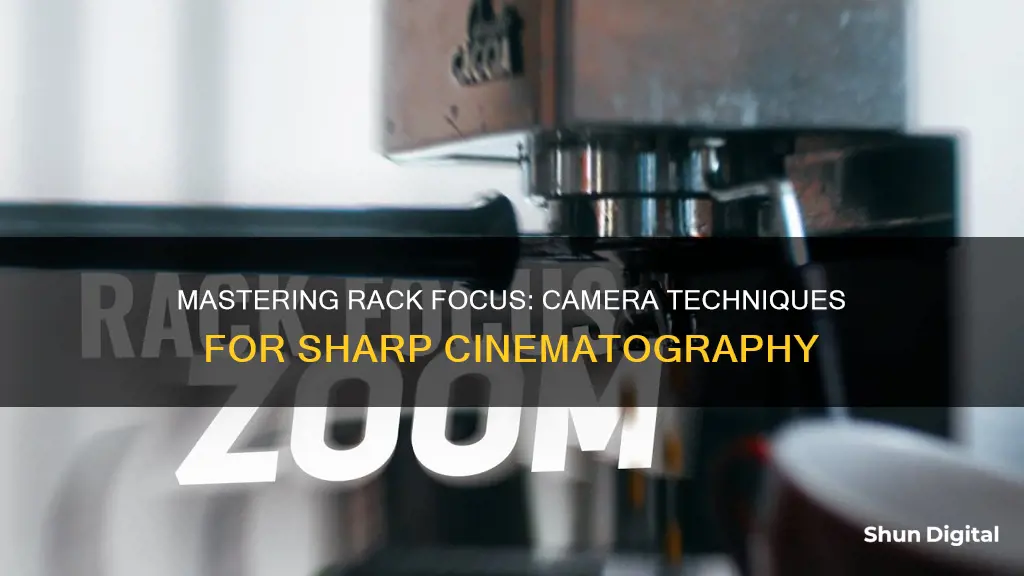
Rack focus, also known as focus pull or pulling focus, is a filmmaking technique that involves changing the focus of the lens during a continuous shot. This technique is used to direct the audience's attention to a specific detail, add dramatic flourish, or transition between scenes, among other things. To achieve rack focus, the focus puller (or first assistant camera) works in tandem with the camera operator to adjust the focus ring during the shot. This process requires careful measurement and practice to ensure the desired focus points are achievable and can be smoothly transitioned between. The speed and pace of the focus shift can also be manipulated to create different effects, such as excitement or suspense.
| Characteristics | Values |
|---|---|
| Definition | A filmmaking technique of changing the focus of the lens during a continuous shot. |
| Other Names | Focus pull, pulling focus |
| Reasons to Use | Transitioning between scenes, adding dramatic flourish, drawing the eye to a specific detail, connecting elements or characters, combining multiple shots into one, following a character's train of thought, revealing something hidden in the frame |
| Who Performs It | Focus Puller (First Assistant Camera or 1st AC) |
| Who They Work With | Camera Operator |
| Equipment | Camera lens with a manual focus ring, follow focus system, loupe or finder, external monitor |
| Steps | Set up shot and subjects, adjust depth of field, measure distances, set focus points, practice rack focus |
| Speed | Can be fast to cause excitement and action, or slow to build suspense and intrigue |
What You'll Learn

Utilise foreground, middleground and background
When creating a rack focus shot, one of the most important elements to remember is to use the planes of foreground, middleground, and background. A fun goal for setting your rack focus is to find a creative way to pass through all three planes, starting in the foreground and moving your focus across the middle and settling on a subject in the background (or vice versa).
In Francis Ford Coppola's Apocalypse Now, the foreground layer is outlined in red, the middleground in yellow, and the background in green and blue. In this shot, the foreground is the most prominent, with the middle and background layers out of focus.
In Martin Scorsese's Taxi Driver, the three layers work together to provide depth and complexity. In the foreground, we have the out-of-focus steering wheel, in the middleground, Robert De Niro's character, and in the background, the extremely out-of-focus cars. Notice how your eye moves naturally to the foreground, but the background can still draw some of your attention.
In Orson Welles' Citizen Kane, all three layers are equally in focus and divided across the screen, showcasing the available options when creating your compositions.
When you're setting up your shot, you need to decide on the depth of field you'll be using. There are no rules as to how deep your depth of field needs to be. You can use either a deep or shallow depth of field, depending on what works best in the shot. The distance between your subjects and the depth of field will make the rack focus more or less noticeable.
The Craftsmanship Behind Leica Cameras
You may want to see also

Control the speed and pace of the focus shift
When conducting a rack focus, you have complete control over the speed and pace of the focus shift. Whether you are using your hands on the lens's focus ring or a pulling device, any kinetic technique will give you 100% control over how fast or slow the focus racks.
Experiment with different speeds to achieve different effects. A fast rack focus can elicit excitement and action, whereas a slow rack focus can build suspense and intrigue.
For example, in the film *The Host*, the director uses a long hallway to pull focus back and forth between the main character and their siblings as they try to escape from quarantine. The camera moves from the foreground to the middle ground, to the background, and back to the foreground again. This captures four different shots in one, and the suspense of their casual escape is heightened by keeping the action and pulling focus in a single shot. Their panic is then signalled by the final rack focus when they are caught, and the chase begins.
Best Camera for Nighttime Portrait Mode on the Galaxy S22
You may want to see also

Use a focus puller
The focus puller, also known as the 1st Assistant Camera (1st AC), is a vital member of a film crew, responsible for maintaining the camera lens's focus during filming. This role requires precision and finesse, as they work in tandem with the camera operator to adjust the focus ring without cutting the shot. The focus puller handles the technical aspect of focusing, while the operator concentrates on framing and camera movement.
The focus puller's role is crucial as they ensure the shot is in focus, and any "soft" or out-of-focus images are often unusable. Their work is an art form, and it is a delicate balancing act that requires practice and coordination with the actors and camera department.
To achieve accurate focusing, the focus puller uses tools such as a manual focus ring, follow focus devices, and high-definition monitors. They also take measurements of distances between the camera and subjects, marking these on the lens or follow focus device.
The focus puller plays a key role in rack focus shots, where the lens's focus is adjusted during a continuous shot. This technique is used to direct the audience's attention, add dramatic flourishes, or reveal hidden details.
Focus pulling can be challenging, especially in fast-paced or high-depth-of-field shots, but it is a powerful tool for visual storytelling, allowing filmmakers to guide the viewer's attention and enhance the emotional impact of a scene.
The 1970 SS Cameros: A Limited Edition Run
You may want to see also

Use a shallow depth of field
To achieve a rack focus effect, you need to adjust the depth of field in your shot. A shallow depth of field is when only one plane of the scene is in focus, with the rest of the image appearing out of focus. This technique is used to emphasise one part of the image over another.
To achieve a shallow depth of field, you can adjust the F-stop of your camera to a lower number (e.g. f/1.2, f2.0). This will result in a more noticeable transition between focal planes in your rack focus shot. You can also use a larger aperture, a close viewpoint, a larger image sensor, or a longer focal length lens from a smaller distance to achieve a shallow depth of field.
A shallow depth of field can be used to great effect in visual storytelling. For example, in the film "Contagion", director Steven Soderbergh uses shallow focus to keep the audience locked into the individual stories of the main characters, even as the world around them erupts into chaos.
Shallow depth of field can also be used to hide parts of a scene that would otherwise require expensive props, or to add a sense of mystery to a character.
Latest Camera Raw 11 Features Explained
You may want to see also

Add movement to the camera
Adding movement to the camera can be a great way to enhance the cinematic quality of your shots and direct the audience's attention. Here are some tips to achieve this:
Combine Camera Movements with Rack Focus
Adding simple pans, tilts, or smooth dolly movements to your rack focus shots can create a complex and dynamic visual. This combination of techniques can heighten the impact of the scene and guide the viewer's gaze, enhancing the storytelling aspect of your film.
Utilise Follow-Focus Techniques
Follow-focus techniques involve racking the focus as your subject moves toward or away from the camera. This method ensures the subject remains in focus while also adding a sense of movement and depth to the shot. It requires precise coordination between the camera operator and the focus puller to achieve flawless results.
Employ Physical Camera Movement
Physical camera movement can be introduced by adding equipment like a dolly or slider. These tools enable you to smoothly move the entire camera setup, creating a sense of motion that can enhance the rack focus effect. This technique is particularly effective when combined with the utilisation of foreground, middleground, and background planes in your composition.
Use Keyframing or Auto-Reframe Techniques
If you're editing your footage, you can fake camera movement using software like Filmora X. Keyframing involves setting starting and ending points for your desired movement, allowing you to apply effects like zoom or resize. Alternatively, the auto-reframe option in Filmora X can automatically adjust the aspect ratio, creating the illusion of camera movement.
By incorporating these techniques, you can add movement to your camera setups and enhance the visual impact of your rack focus shots, elevating the overall production value of your film.
Fight Speeding Camera Tickets: Your Legal Rights and Strategies
You may want to see also
Frequently asked questions
Rack focus, also known as focus pull or pulling focus, is a filmmaking technique where the focus of the lens is changed during a continuous shot. The focal plane is moved from one object in the frame to another, with the transition between focal planes being more noticeable in shallower depths of field.
Rack focus is used to direct the audience's attention to a specific detail, character, or part of the scene. It can also be used to transition between scenes, add dramatic flourish, combine multiple shots, or follow a character's train of thought.
First, gather the necessary equipment, including a camera lens with a manual focus ring. Then, stage your camera and subjects, determining the relative positions and the depth of field. Adjust your depth of field to make the rack focus more or less noticeable. Finally, measure the distances between the camera and the subjects to set your focus points.
Set your focus points and practice the rack focus a few times before rolling. Utilize the foreground, middleground, and background to create interesting compositions. Experiment with different speeds for your focus shift to create different effects. Combine camera movements with rack focus for more complex and cinematic shots. Use add-on equipment like manual focus rings or off-camera controls for more precise control.



